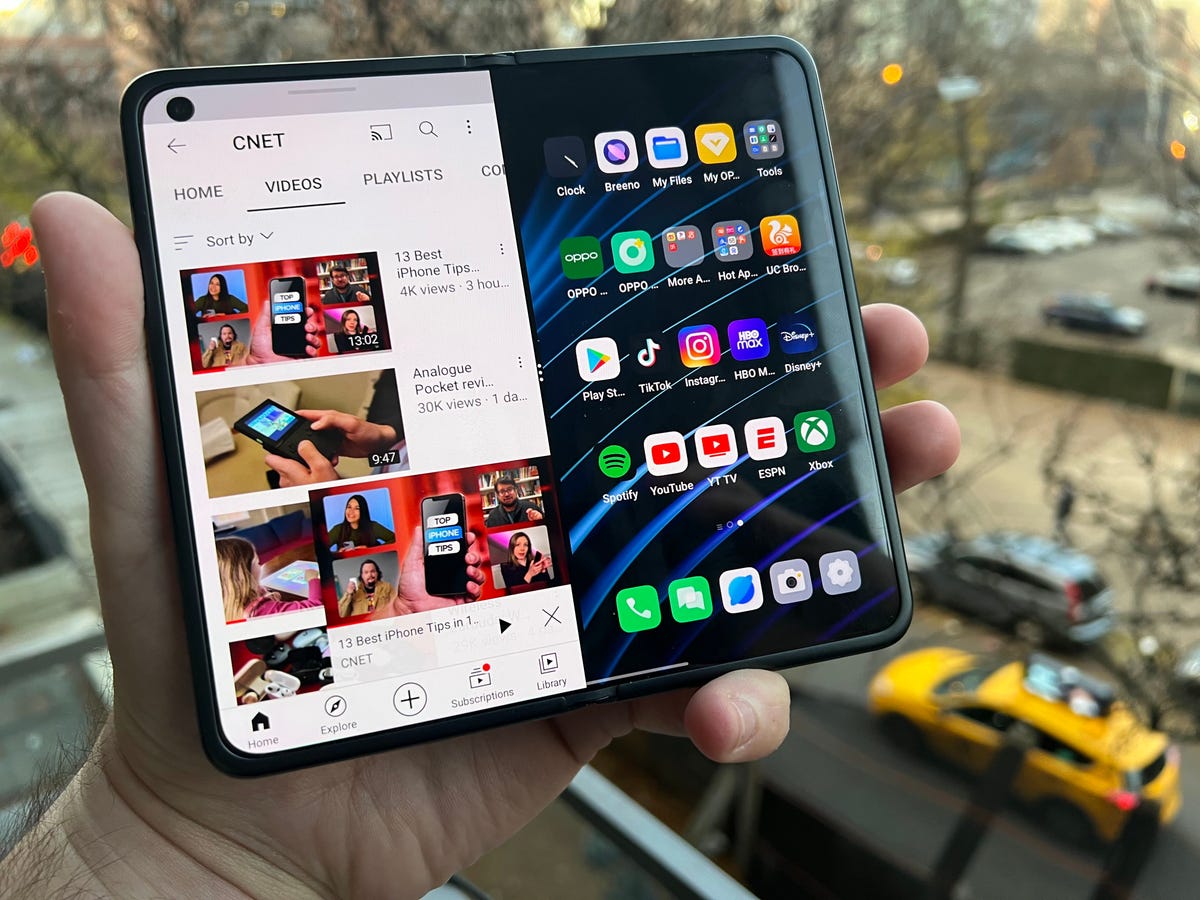[ad_1]
Google could be the next major tech company to throw its hat into the foldable ring. There have been rumors fluttering for a while that a bendy handset might see the light of day, especially given the company’s recent focus on hardware. Google announced six new gadgets at its annual developer event, including its first smartwatch, as well as July’s launch of the Pixel 6A.
So far the company has kept mum on the possibility of a foldable phone. But that hasn’t stopped the rumor mill from churning and Pixel fans from hoping considering the role foldables might play in the future of the industry as well as Google’s actions over the years. In December 2018, it filed a patent application for a foldable device, and in May 2019 Google confirmed that it had been prototyping the folding technology.
Although the phone’s name is nowhere near confirmed — it could be called the Pixel Fold or maybe the Pixel Notepad. It could also come as early as the fourth quarter of this year, according to reliable display analyst Ross Young, though he didn’t rule out the possibility of a 2023 launch.
Don’t forget, Google isn’t the only company that’s reportedly joining the foldable phones bandwagon. There have long been rumors that Apple’s gearing up to do the same (you can read CNET’s coverage about a potential iPhone Flip here) and Samsung will all but certainly launch its next generation of foldable phones at its Unpacked event in August.

Even when the phone’s opened, it’s hard to find a crease on the Oppo Find N.
Eli Blumenthal/CNET
Pixel Fold design: More Oppo Find N than Galaxy Z Fold 3
Animations found in Android 12L, Google’s software designed specifically for large-screen devices such as tablets and foldable phones, have offered hints at the possible appearance of the Pixel Fold. The Google foldable was initially rumored to resemble the taller and leaner design of Samsung’s Galaxy Z Fold 3, which has an approximate aspect ratio of 22.5:18. But according to 9to5Google and other media outlets, the opened-up Pixel Fold is more likely to resemble the squarish shape of Oppo’s foldable phone, the Find N. When closed, it’s believed to have an aspect ratio closer to 18:9. If that’s true, it would mean that, like the Find N, the Pixel Fold could be more natural to use as a regular phone when closed.
Pixel Fold camera: Camera module may be step down from Pixel 6
There haven’t been many rumors about the Pixel Fold’s camera, but there’s room for some speculation, courtesy of 9to5Google. The website is reporting that the Pixel Fold will have two front-facing 8-megapixel lenses, one presumably on the cover and one for the interiors, as well as a 12-megapixel rear camera. The main sensor is expected to be a step down from the Pixel 6 series, since it’s rumored to rely on Sony’s IMX363 sensor, used in the Pixel 3 in 2018, as opposed to Samsung’s top-of-the-line GN1 sensor, from the main 50-megapixel camera of the Pixel 6 series.
If I had to guess, the logic for this potential decision comes down to the size of the GN1 sensor, which is one of the larger camera sensors on the market. This means it’ll be tough for a foldable phone to carry it without increasing the overall heft of an already-hefty foldable device.
Read more: Google Pixel 6A: The Best Android Phone Under $500

Google put a relatively large image sensor into the main camera of both its $599 Pixel 6 and $899 Pixel 6 Pro.
Google; Screenshot by Stephen Shankland/CNET
Pixel Fold price: $1,400 to $1,800
There’s no telling for certain what a phone will cost until launch day — if that happens at all. But according to a report by 9to5Google citing an unnamed source, the Pixel Fold will be priced below the $1,800 (£1,320 or AU$2,500) mark. Another report spotted by BGR in March claims that the price could be as low as $1,399. That’s less than Samsung’s $1,800 Galaxy Z Fold 3, and if true it’s a comparatively low price, especially considering the Pixel Fold would be Google’s inaugural foldable. For context, Samsung’s inaugural folding phone, the Galaxy Fold, started at $1,980 before its price dropped over the years.
Pixel Fold processor: Tensor
Considering Google went to the complex and costly trouble of developing its own system-on-chip technology, it’s all but certain the Pixel Fold will run on the Tensor chipset, which debuted on the Pixel 6 series.
[ad_2]

